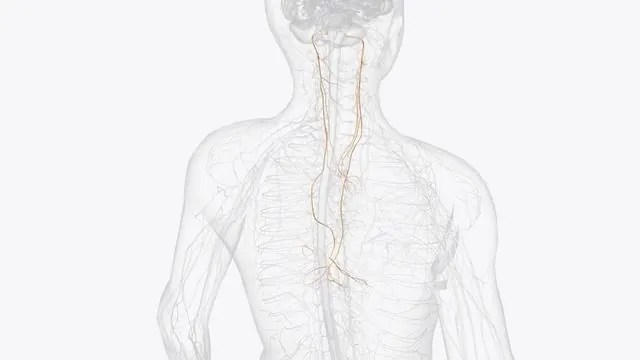
Revolutionary Advances in Spintronics: Unlocking the Future of Computing
2025-01-16
Author: Wei
Introduction
In our increasingly data-driven world, the need for higher capacity, efficiency, and computing power is more pressing than ever. To satisfy this relentless demand for enhanced electronic capabilities, researchers are turning their attention to the dynamic field of spintronics—a domain poised to redefine how we think about data storage and processing.
Unlike conventional electronics that rely solely on the charge of electrons to encode, store, and transmit information, spintronic devices utilize an additional property of electrons: their spin orientation. By defining electron spins as “up” for 0 and “down” for 1, these innovative devices promise unprecedented speed and energy efficiency.
Spin-Torque Phenomenon
To bring spintronics to fruition, scientists must delve deep into the quantum properties of materials. One such crucial property is spin-torque—the phenomenon that allows for electrical manipulation of magnetization. This stands central to developing the next generation of storage and processing technologies.
Groundbreaking Research Breakthrough
Recently, researchers from the University of Utah and the University of California, Irvine (UCI) unveiled a groundbreaking advance in spintronics: a newly discovered form of spin–orbit torque. This research, published in Nature Nanotechnology, introduces a method termed "anomalous Hall torque," which could revolutionize how we manipulate spin and magnetization via electrical currents.
Lead author Eric Montoya, an assistant professor of physics and astronomy at the University of Utah, remarked, “This is brand new physics that opens up a landscape of potential applications.” Among those applications is neuromorphic computing—a paradigm that emulates human brain networks, paving the way for smarter and more capable computing systems.
Understanding Spin-Oriented Torques
Electrons exhibit tiny magnetic fields, akin to miniature magnets, with some spins oriented “up” and others “down.” The new anomalous Hall torque is linked to the classical anomalous Hall effect—a concept established by Edwin Hall in 1881, which describes how electrons scatter asymmetrically in a magnetic material. This results in a charge current that flows at a 90-degree angle to the external electric current. In a similar vein, when an external current is applied, a spin current flows perpendicularly, aligning with the direction of magnetization.
Montoya emphasized, “The observed symmetry in these Hall effects translates to the efficiency of controlling spin orientations in various materials,” allowing for specialized tuning in device functions.
The Triad of Torque: A New Era for Spintronics
The anomalous Hall torque contributes to an emerging set of self-generated spin-orbit torques, which exhibit unique symmetries that could support the next generation of spintronics devices. Alongside the known spin Hall torque and the recently identified planar Hall torque, the anomalous Hall torque forms a triad of Hall-like spin-orbit torques named “Universal Hall torques.” These universal properties enhance the toolkit for researchers to innovate spintronics technologies.
Traditionally, spintronics devices were constructed using a non-magnetic layer between two ferromagnetic materials. The new device structures showcased in the study exhibit a revolutionary approach: the capability to transfer spin orientation from a ferromagnetic conductor directly to an adjacent non-magnetic material, obviating the necessity for a secondary magnetic layer.
The authors even introduced a pioneering prototype—utilizing the anomalous Hall torque to design a nanoscale spin-torque oscillator, which functions similarly to a neuron but operates at significantly faster speeds. Co-author Ilya Krivorotov, a physicist at UCI, highlighted the exciting next step: “We aim to interconnect these devices within a larger framework, opening possibilities for neuromorphic applications—such as advanced image recognition—far beyond today’s capabilities.”
Conclusion
Supported by the National Science Foundation, this pioneering research not only enhances our understanding of spintronics but also positions us closer to a reality where electronics could seamlessly mimic human cognitive functions, marking the dawn of a new technological era.
Stay tuned for more updates as the world of spintronics evolves, potentially reshaping how we interact with technology!




 Brasil (PT)
Brasil (PT)
 Canada (EN)
Canada (EN)
 Chile (ES)
Chile (ES)
 Česko (CS)
Česko (CS)
 대한민국 (KO)
대한민국 (KO)
 España (ES)
España (ES)
 France (FR)
France (FR)
 Hong Kong (EN)
Hong Kong (EN)
 Italia (IT)
Italia (IT)
 日本 (JA)
日本 (JA)
 Magyarország (HU)
Magyarország (HU)
 Norge (NO)
Norge (NO)
 Polska (PL)
Polska (PL)
 Schweiz (DE)
Schweiz (DE)
 Singapore (EN)
Singapore (EN)
 Sverige (SV)
Sverige (SV)
 Suomi (FI)
Suomi (FI)
 Türkiye (TR)
Türkiye (TR)
 الإمارات العربية المتحدة (AR)
الإمارات العربية المتحدة (AR)